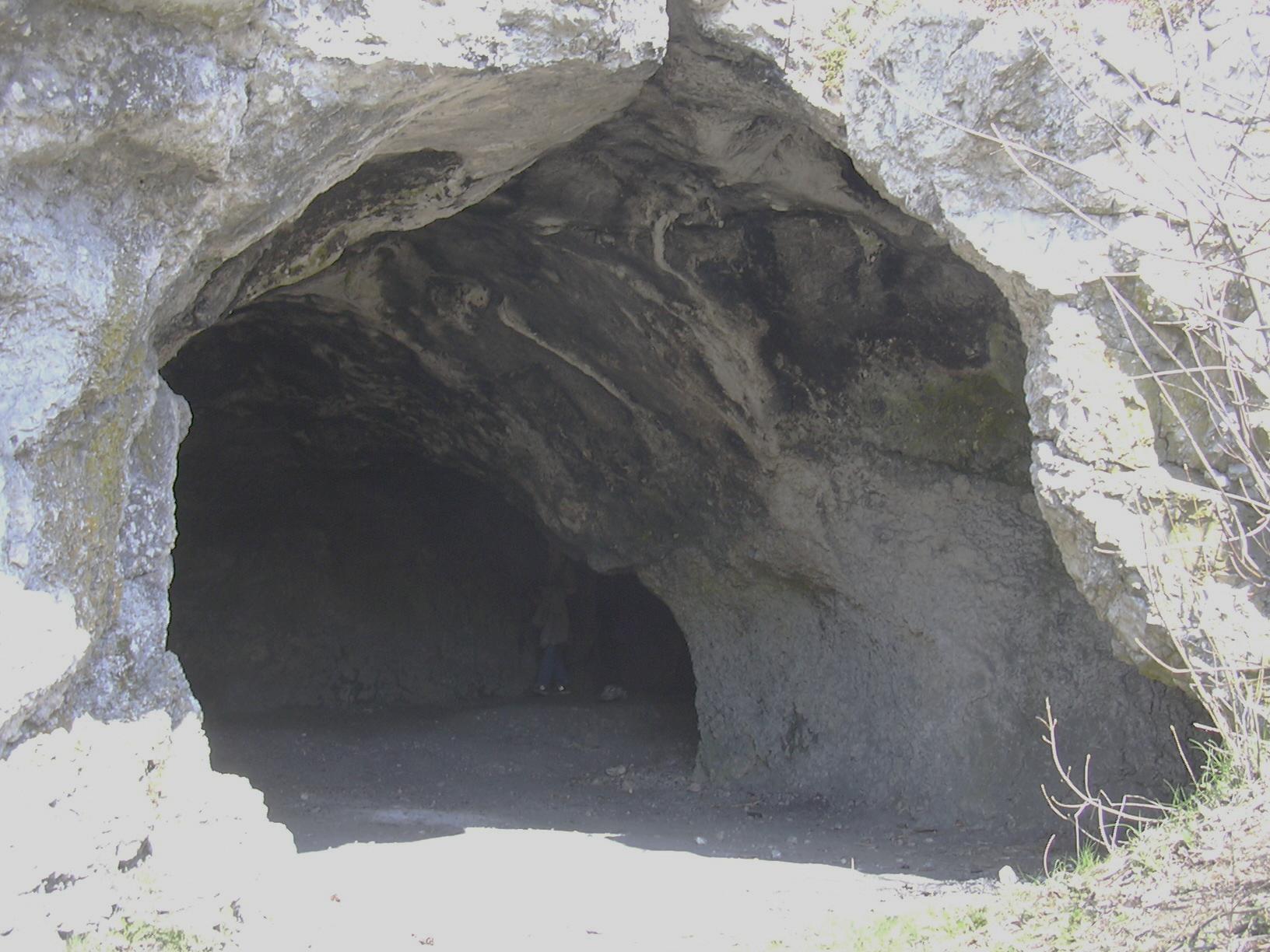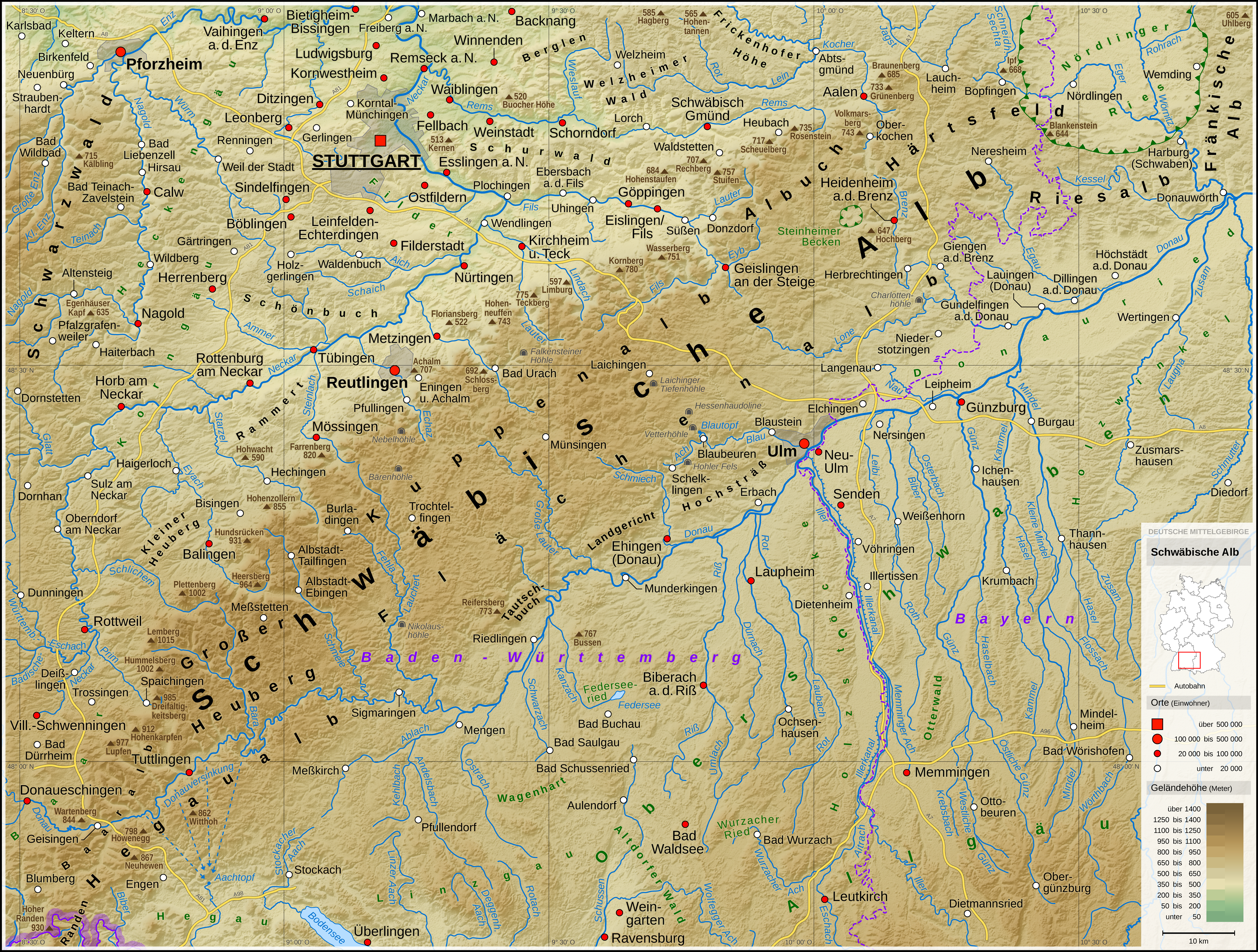|
Vogelherd
The Vogelherd Cave (german: Vogelherdhöhle , or simply ''Vogelherd'') is located in the eastern Swabian Jura, south-western Germany. This limestone karst cave came to scientific and public attention after the 1931 discovery of the Upper Palaeolithic ''Vogelherd figurines'', attributed to paleo-humans of the Aurignacian culture. These miniature sculptures made of mammoth ivory rank among the oldest uncontested works of art of mankind. Because of the cultural importance of these sculptures and the cave's testimony to the development of Paleolithic art and culture, in 2017 the site became part of the UNESCO World Heritage Site called Caves and Ice Age Art in the Swabian Jura. Location The site is located on the edge of the valley of the river Lone near Stetten ob Lontal, part of Niederstotzingen in the eastern Swabian Jura, Baden-Württemberg, southern Germany. It is not publicly accessible, but since 2013 has been embedded in the ''Archäopark Vogelherd'' that includes a m ... [...More Info...] [...Related Items...] OR: [Wikipedia] [Google] [Baidu] |
Caves And Ice Age Art In The Swabian Jura
The Caves and Ice Age Art in the Swabian Jura are a collection of six caves in southern Germany which were used by Ice Age humans for shelter about 33,000 to 43,000 years ago. Within the caves were found the oldest non-stationary works of human art yet discovered, in the form of carved animal and humanoid figurines, in addition to the oldest musical instruments ever found.One statuette of a female form, carved figurines of animals (including cave lions, mammoths, horses and cattle), musical instruments and items of personal adornment have been discovered. Some of the figurines depict creatures that are half animal, half human. Because of their testimony to the development of Paleolithic art and culture, the six caves were inscribed on the UNESCO World Heritage List in 2017. The caves are seen as the first centre of human art. Location The World Heritage comprises six caves which are distributed across two valleys in the Swabian Jura: Lone (river) Valley and Ach Valley. The form ... [...More Info...] [...Related Items...] OR: [Wikipedia] [Google] [Baidu] |
Niederstotzingen
Niederstotzingen () is a small city in the district of Heidenheim in Baden-Württemberg in southern Germany. It is situated 17 km southeast of Heidenheim, and 24 km northeast of Ulm. The city consists of four sections or villages; Niederstotzingen, Oberstotzingen, Stetten ob Lontal and the combined section Lontal und Reuendorf. There are 4,850 inhabitants. History Vogelherdhöhle The region around Niederstotzingen has been inhabited since pre-historic times. Finds of mammoth ivory carvings in the area have been dated to 35,000 BC. The main source of these carvings is the '' Vogelherdhöhle'', a cave near modern Niederstotzingen which may have been used as a rest area and shelter for nearly 30,000 years. The cave was discovered in 1931 by a senior railroad clerk and historian, Hermann Mohn, as he explored the hills above the city. An expedition in 1931, led by Gustav Riek, discovered eleven carved animal figures that dated from around 32,000 years ago. A 2005–2 ... [...More Info...] [...Related Items...] OR: [Wikipedia] [Google] [Baidu] |
Aurignacian
The Aurignacian () is an archaeological industry of the Upper Paleolithic associated with European early modern humans (EEMH) lasting from 43,000 to 26,000 years ago. The Upper Paleolithic developed in Europe some time after the Levant, where the Emiran period and the Ahmarian period form the first periods of the Upper Paleolithic, corresponding to the first stages of the expansion of ''Homo sapiens'' out of Africa. They then migrated to Europe and created the first European culture of modern humans, the Aurignacian. An Early Aurignacian or Proto-Aurignacian stage is dated between about 43,000 and 37,000 years ago. The Aurignacian proper lasts from about 37,000 to 33,000 years ago. A Late Aurignacian phase transitional with the Gravettian dates to about 33,000 to 26,000 years ago. The type site is the Cave of Aurignac, Haute-Garonne, south-west France. The main preceding period is the Mousterian of the '' Neanderthals''. One of the oldest examples of figurative art, the V ... [...More Info...] [...Related Items...] OR: [Wikipedia] [Google] [Baidu] |
University Of Tübingen
The University of Tübingen, officially the Eberhard Karl University of Tübingen (german: Eberhard Karls Universität Tübingen; la, Universitas Eberhardina Carolina), is a public research university located in the city of Tübingen, Baden-Württemberg, Germany. The University of Tübingen is one of eleven German Excellence Universities. The University of Tübingen is especially known as a centre for the study of plant biology, medicine, law, archeology, ancient cultures, philosophy, theology, and religious studies as well as more recently as center of excellence for artificial intelligence. The university's noted alumni include presidents, EU Commissioners, and judges of the Federal Constitutional Court. The university is associated with eleven Nobel laureates, especially in the fields of medicine and chemistry. History The University of Tübingen was founded in 1477 by Count Eberhard V (Eberhard im Bart, 1445–1496), later the first Duke of Württemberg, a civic ... [...More Info...] [...Related Items...] OR: [Wikipedia] [Google] [Baidu] |
Gustav Riek
Johannes Gustav Riek (May 23, 1900 in Stuttgart − November 1, 1976 in Feldstetten) was a German archaeologist from the University of Tübingen who worked with the SS Ahnenerbe in their excavations, and led the teams that excavated the Vogelherd Cave in 1931, the Heuneburg Tumulus burial mounds in 1937 and the Brillenhöhle 1955–63. At Vogelherd, Riek discovered ivory figurines of the Aurignacian The Aurignacian () is an archaeological industry of the Upper Paleolithic associated with European early modern humans (EEMH) lasting from 43,000 to 26,000 years ago. The Upper Paleolithic developed in Europe some time after the Levant, where ... archeological tradition. Works * ''Die Eiszeitjägerstation am Vogelherd im Lonetal'' (1934) * ''Kulturbilder aus der Altsteinzeit Württembergs'' (1935) * ''Die Mammutjäger vom Lonetal'' (1951) 1900 births 1976 deaths Archaeologists from Baden-Württemberg Ahnenerbe members Hinzert concentration camp personnel Ref ... [...More Info...] [...Related Items...] OR: [Wikipedia] [Google] [Baidu] |
Swabian Jura
The Swabian Jura (german: Schwäbische Alb , more rarely ), sometimes also named Swabian Alps in English, is a mountain range in Baden-Württemberg, Germany, extending from southwest to northeast and in width. It is named after the region of Swabia. The Swabian Jura occupies the region bounded by the Danube in the southeast and the upper Neckar in the northwest. In the southwest it rises to the higher mountains of the Black Forest. The highest mountain of the region is the Lemberg (). The area's profile resembles a high plateau, which slowly falls away to the southeast. The northwestern edge is a steep escarpment (called the Albtrauf or Albanstieg, rising up , covered with forests), while the top is flat or gently rolling. In economic and cultural terms, the Swabian Jura includes regions just around the mountain range. It is a popular recreation area. Geology The geology of the Swabian Jura is mostly limestone, which formed the seabed during the Jurassic period. The sea ... [...More Info...] [...Related Items...] OR: [Wikipedia] [Google] [Baidu] |
Lone (river)
The Lone is a river in Baden-Württemberg, Germany. It flows into the Hürbe river, a tributary of the Brenz, which in turn discharges into the Danube. Course The Lone rises from a Karst spring with a large discharge near Urpsring, in the municipality of Lonsee, Baden-Württemberg. It flows southeast and then turns northeast. After around 37 km it flows into the Hürbe, which in turn is a tributary of the Brenz. The valley of the Lone is fairly shallow, with rises of only around 50 m on both sides. The valley's width is up to 200 m. The flat valley floor is covered by meadows and fields, the slopes of reef limestone are mostly wooded. The karst on the slopes contains various caves and protuberances which were repeatedly visited by prehistoric hunter/gatherer groups as long ago as the Paleolithic and post-Ice Age Mesolithic. Among these are the Bocksteinhöhle, Hohlenstein-Stadel and Vogelherd Cave, locations of important pre-historic findings. See also *List of river ... [...More Info...] [...Related Items...] OR: [Wikipedia] [Google] [Baidu] |
Hand Axe
A hand axe (or handaxe or Acheulean hand axe) is a prehistoric stone tool with two faces that is the longest-used tool in human history, yet there is no academic consensus on what they were used for. It is made from stone, usually flint or chert that has been "reduced" and shaped from a larger piece by knapping, or hitting against another stone. They are characteristic of the lower Acheulean and middle Palaeolithic ( Mousterian) periods, roughly 1.6 million years ago to about 100,000 years ago, and used by ''Homo erectus'' and other early humans, but rarely by ''Homo sapiens''. Their technical name (biface) comes from the fact that the archetypical model is a generally bifacial (with two wide sides or faces) and almond-shaped (amygdaloidal) lithic flake. Hand axes tend to be symmetrical along their longitudinal axis and formed by pressure or percussion. The most common hand axes have a pointed end and rounded base, which gives them their characteristic almond shape, and b ... [...More Info...] [...Related Items...] OR: [Wikipedia] [Google] [Baidu] |
Mousterian
The Mousterian (or Mode III) is an archaeological industry of stone tools, associated primarily with the Neanderthals in Europe, and to the earliest anatomically modern humans in North Africa and West Asia. The Mousterian largely defines the latter part of the Middle Paleolithic, the middle of the West Eurasian Old Stone Age. It lasted roughly from 160,000 to 40,000 BP. If its predecessor, known as Levallois or Levallois-Mousterian, is included, the range is extended to as early as 300,000–200,000 BP. The main following period is the Aurignacian (c. 43,000–28,000 BP) of ''Homo sapiens''. Naming The culture was named after the type site of Le Moustier, three superimposed rock shelters in the Dordogne region of France. Similar flintwork has been found all over unglaciated Europe and also the Near East and North Africa. Handaxes, racloirs, and points constitute the industry; sometimes a Levallois technique or another prepared-core technique was employ ... [...More Info...] [...Related Items...] OR: [Wikipedia] [Google] [Baidu] |
Silex
Silex is any of various forms of ground stone. In modern contexts the word refers to a finely ground, nearly pure form of silica or silicate. In the late 16th century, it meant powdered or ground up "flints" (i.e. stones, generally meaning the class of "hard rocks") It was later used in 1787 when describing experiments in a published paper by Antoine Lavoisier where such earths are mentioned as the source of his isolation of the element silicon. ''Silex'' is now most commonly used to describe finely ground silicates used as pigments in paint. Archaic and foreign uses * The word "silex" was previously used to refer to flint and chert and sometimes other hard rocks. * In Latin "silex" originally referred to any hard rock, although now it often refers specifically to flint.Vitruvius ''De Arch'' 1.5.8.5 http://latin.packhum.org/loc/1056/1/9/4230-4235 * In many Latin languages, "silex" or a similar word is used to refer to flint. Although the modern English word "silex" has th ... [...More Info...] [...Related Items...] OR: [Wikipedia] [Google] [Baidu] |
Eemian
The Eemian (also called the last interglacial, Sangamonian Stage, Ipswichian, Mikulin, Kaydaky, penultimate,NOAA - Penultimate Interglacial Period http://www.ncdc.noaa.gov/global-warming/penultimate-interglacial-period Valdivia or Riss-Würm) was the interglacial period which began about 130,000 years ago at the end of the Penultimate Glacial Period and ended about 115,000 years ago at the beginning of the Last Glacial Period. It corresponds to Marine Isotope Stage 5e. Although sometimes referred to as the "last interglacial" (in the "most recent previous" sense of "last"), it was the second-to-latest interglacial period of the current Ice Age, the most recent being the Holocene which extends to the present day (having followed the last glacial period). The prevailing Eemian climate was, on average, around 1 to 2 degrees Celsius (1.8 to 3.6 Fahrenheit) warmer than that of the Holocene. During the Eemian, the proportion of in the atmosphere was about 280 parts per million. The ... [...More Info...] [...Related Items...] OR: [Wikipedia] [Google] [Baidu] |
Neanderthal
Neanderthals (, also ''Homo neanderthalensis'' and erroneously ''Homo sapiens neanderthalensis''), also written as Neandertals, are an extinct species or subspecies of archaic humans who lived in Eurasia until about 40,000 years ago. While the "causes of Neanderthal disappearance about 40,000 years ago remain highly contested," demographic factors such as small population size, inbreeding and genetic drift, are considered probable factors. Other scholars have proposed competitive replacement, assimilation into the modern human genome (bred into extinction), great climatic change, disease, or a combination of these factors. It is unclear when the line of Neanderthals split from that of modern humans; studies have produced various intervals ranging from 315,000 to more than 800,000 years ago. The date of divergence of Neanderthals from their ancestor ''H. heidelbergensis'' is also unclear. The oldest potential Neanderthal bones date to 430,000 years ago, but the classificati ... [...More Info...] [...Related Items...] OR: [Wikipedia] [Google] [Baidu] |


.jpg)




